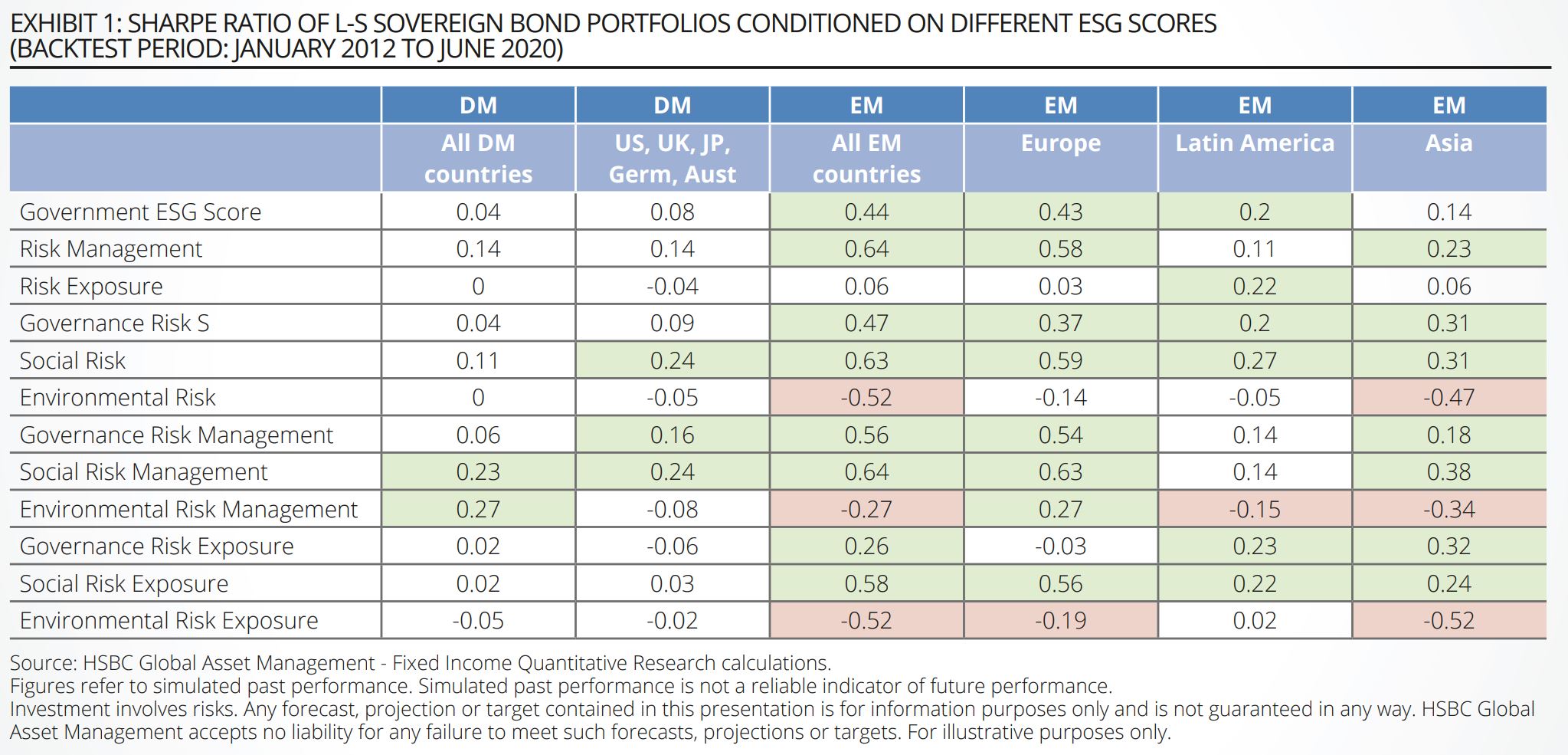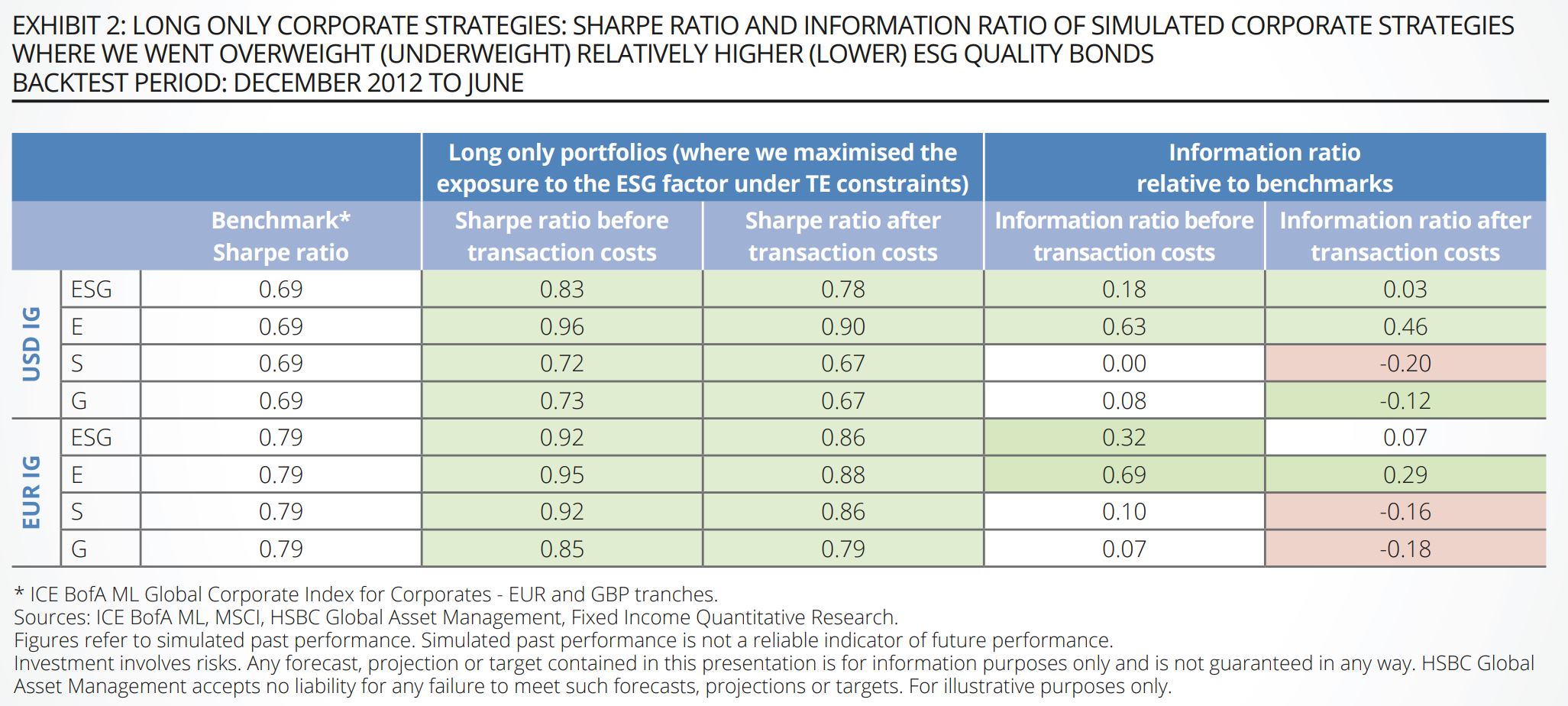Strategies that integrate environmental, social and governance (ESG) factors in their investment process have outperformed during the ongoing COVID-19 crisis. Our own analysis confirms these results. Nevertheless, we think that the analysis of the observations made during unprecedented circumstances should not be the sole driver of institutional long-term fixed income allocations.
We decided to put these findings into perspective by looking at a broader time period, from 2007 to June 2020. We find this period relevant because it coincides with the Global Financial Crisis and strong implementation of unconventional monetary policies which after an eventual pause, resumed again with the COVID-19 crisis.
Using our quantitative fixed income research capabilities, we aimed to establish the extent to which issuers with better ESG scores can enhance portfolio returns over different market conditions. In this research paper, we wanted to quantify the impacts of ESG factors on the quality and performance of investment grade corporate and government bonds.
Methodology
We backtested the performance of monthly rebalanced long short (L-S) portfolios, where we went long (short) for relatively higher (lower) ESGrated bonds, with each portfolio conditioned on either the overall ESG score, a different ESG pillar (either environmental, social or governance factors) or sub-scores covering specific ESG issues. Bond risk was taken into account in the portfolio construction.
We did this for corporate and sovereign bonds for both developed and emerging markets, and for different chosen segments (selected country groups for sovereign bonds, ratings and sectors in the case of corporate bonds). We also backtested benchmarked strategies of long-only portfolios for investment grade corporate bonds in developed markets, in a more realistic setting, taking into account transaction costs.
To proceed, we used MSCI ESG scores. Bond portfolios’ performance was measured by 5-year CDS returns in the case of sovereign bonds, and by bond excess returns on cash in the case of corporates.
Our findings on sovereign bonds
In the case of sovereign bonds, the construction of portfolios which went long for the highest-ESG rated bonds and short for the lowest ESG rated bonds delivered positive risk-adjusted returns for emerging markets. Incorporating the Social and
Governance factors yielded significant positive results while the integration of environmental issues in sovereign bond portfolios did not yield significant performance results. The results were a lot less significant in developed markets.
We believe these results could very well change in the future, in particular with the growing importance of environmental factors and the international treaties being signed to fight against climate change, governments will be increasingly scrutinised by agencies and markets in this context.

Our findings on investment grade corporate bonds
Our testing of investment grade corporate bond performance in L-S portfolios has revealed that, overall, the integration of ESG factors was effective for issuers in developed markets – but not as significant in emerging/frontier markets. Overweighting corporate bonds with better ESG quality in developed markets delivered positive returns in various market segments, with the environmental factor acting as a key differentiator particularly from 2012 onwards – when MSCI extended its ESG rating coverage – followed by social and governances factors.
We tested ESG signals in long-only investment grade corporate bond strategies in developed markets, where we maximised the exposure to ESG scores while remaining benchmark-constrained on other structure characteristics, such as yield, spread, DTS and sector composition. The portfolios delivered sharpe ratios close to those of the benchmark or slightly higher in EUR and USD portfolios, even after transaction costs. However, information ratios of the ESG portfolios after transaction costs were negative in a few cases as a result of the slightly lower beta of the ESG portfolio relative to its benchmark.

Conclusion
Given that ESG scores have not been in use for very long, we can’t say that an “ESG factor” has been identified, but we can comfortably say that the integration of ESG in fixed income portfolios did not harm returns.
In fact, during the period of time we analysed, ESG integration added value to investors in most circumstances.
Nevertheless, we must stress that since ESG high rated bonds tend to have a lower beta, taking into account ESG factors in a fixed-income investment solution necessitates an informed and sensible portfolio construction in order to mitigate unwanted bias.
DisclosureThis is based on the fact ETF Stream has had sight of the disclaimer and are satisfied that it will only be distributed to clients relevant to the European countries specified in the important information disclaimer on the original document.
Maria-Laura Hartpence is head of fixed income quantitative research at HSBC GAM
This article first appeared in the Q4 2020 edition of Beyond Beta, the world’s only smart beta publication. To receive a full copy,click here.



